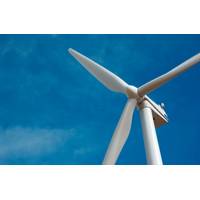General Electric, fresh from taking on the offshore wind business of rival Alstom, is positioning itself in Germany's expanding offshore wind sector and looking at eastern Europe.
"German offshore wind has become very important for us," Carlos Haertel, chief executive for GE Germany & Austria, told Reuters in an interview.
"Onshore wind in eastern Europe and the Balkan countries is currently interesting, especially in Poland and Romania," he said.
GE, the world's third-biggest wind turbine manufacturer by market share after Denmark's Vestas and China's Goldwind, expects to complete a high-profile offshore wind link called DolWin3, which is likely to lead to further ventures.
DolWin3 involves converter stations and connecting cable systems for a platform operated by grid firm TenneT which clusters 900 megawatt of wind farms and links them with the mainland.
Haertel confirmed that completion was expected in 2017.
Once Germany's specific problem of long distances between turbines and the mainland has been resolved and transmission technology shown to be manageable, its ambitious programme to build 6.5 gigawatt (GW) of offshore capacity by 2020 can roll.
The country's programme to decarbonise its energy sector means there is no longer a market for conventional power stations, Haertel said.
However, there is rising demand for components and IT to produce, transmit and operate power from wind and solar energy and integrate it with thermal energy, where GE's wide portfolio will come into play, he said.
GE completed its purchase in November of Alstom's energy business, announced 18 months earlier, and merged it with its power and water unit and renamed it GE Power.
Renewable energy accounted for $6.3 billion, or 5 percent, of GE's sales in 2015, down from $6.4 billion a year earlier.
The company derives 14 percent of its total revenues in Europe, but does not break them out on a country-by-country basis.
"Energy is central for us in Germany and accounts for a big share of total sales," Haertel said.
GE Germany is also active in medical technology, research and financial services.
Nascent wind industries in eastern Europe, which are due to exploit suitable geographies for tapping wind speeds, could receive equipment from GE's Germany-based manufacturing sites, he said.
(Reporting by Vera Eckert and Chris Steitz, editing by Susan Fenton)












